Roses are one of the oldest flowers, a classic choice for many gardeners. With thousands of cultivars, there's bound to be a type for every need. But do roses like clay soil? We've checked with gardening experts for the official details.
Roses thrive in clay soil as long as it has adequate drainage. Most clay holds water too long for roses to be comfortable, and as a result, clay isn't their best soil. However, roses like clay soil when it's been amended with plenty of organic matter to speed up water movement.
Keep reading, and we'll explain why roses like clay soil and why they don't. We'll also cover what the best soil is for roses. Then, we'll give you some tips for improving your clay soil for planting roses. Finally, we'll give you some rose breeds that are the best choices for more difficult soil. Without further ado, let's get into it.

Roses And Clay Soil
Roses like clay soil because it holds water. Roses don't like being dry. As a result, they'd prefer clay soil to sand any day.
However, that clay soil needs to have adequate drainage. Even though they don't like dry conditions, they also hate soggy roots.
As a result, roses can thrive in the right clay soil. They won't be happy in clay that gets waterlogged easily, as most clay does.
Luckily, you can always amend your soil to improve the drainage. With a little care and planning, your roses can live their best life in clay soil.
What's The Best Soil For Roses?
The best soil for roses is loam. Loam is a well-balanced blend of the three major soil types.
Soil can be broken down into one of three categories: sand, silt, or clay. Loam combines all three, creating a combination that is ideal for many plants.
For example, clay generally has poor drainage. Sand, on the other hand, has poor water retention. Loam soil offers the best of both.
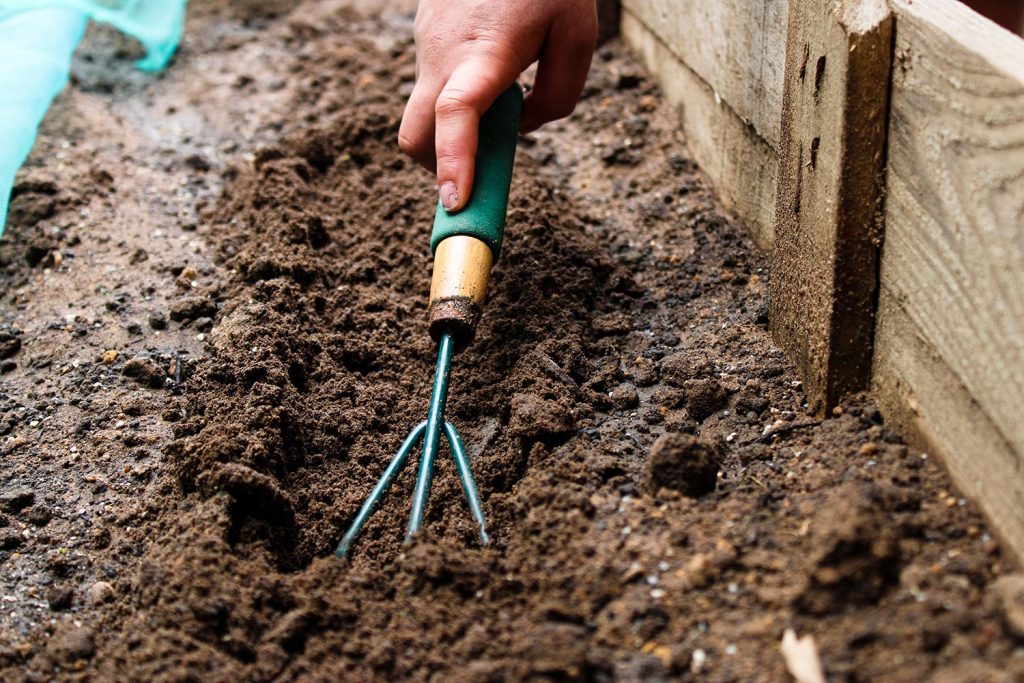
Note that as a result, many people think they can fix their clay soil by adding sand. This is a common mistake. Trying to mix sand into clay typically creates a cement-like mass with no benefit.
While loam soil does combine these three types, it does so more organically (and also includes silt). You just can't get the same result by stirring sand into clay soil.
Do Roses Prefer Acidic Or Alkaline Soil?
Roses prefer slightly acidic soil. A pH of 6.0-6.5 is perfect. Neutral pH is, of course, 7.0.
When the pH becomes more acidic than this, plants have a hard time taking in enough nitrogen and potassium. Similarly, pH levels of 7.5 or higher mean plants can't get iron and manganese.
This means that it's important to make sure your soil pH is in that ideal range. No matter how much time you spend making sure your plants have plenty of nutrients, they won't be able to use them if the pH levels are out of control.
You can test your soil with a reader like this. Many offer multiple tools. For example, this one does moisture content and sunlight readings as well.
Click here to see this soil tester on Amazon.
If the soil is too acidic, just add a little lime or wood ash. Not acidic enough? Try aluminum sulfate. You can also use commercial fertilizers like this.
Click here to see this rose fertilizer on Amazon.
How Do You Prepare Clay Soil For Planting Roses?
The biggest problem with clay soil is the lack of drainage. As a result, preparing the dirt for roses is primarily about fixing this issue.
First, dig a hole slightly bigger than the rose itself. Next, add three or four inches of organic matter. Some ideas include compost or manure. Work it into the soil.
You can also add nutrients such as bonemeal which increases phosphorous. By testing the soil, you can have a better idea of what is needed. Soil testing can also tell you if the pH needs to be amended.

Mix a layer of mulch into the soil and work it in. This keeps the ground from becoming compacted around the roots.
Once the soil is ready, plant your rose. You can then fill the space around the rose with more organic matter. Work dirt in as well.
Then, after planting, be sure to put a two-inch layer of organic mulch on top of the earth as well. It will break down in time, providing more material to improve the soil texture.
How Can I Check My Soil's Drainage?
If your ground is not a hard, dense clay, you might wonder if it's heavy enough to become waterlogged. Luckily, there's an easy way to check.
Dig a hole about a foot deep and fill it with water. It should only take about 15 minutes for the water to pass completely through.
If, after 15 minutes, you still have a puddle of standing water, then it's not draining fast enough. The roots of most plants—roses included—do not like to stay wet for this long.
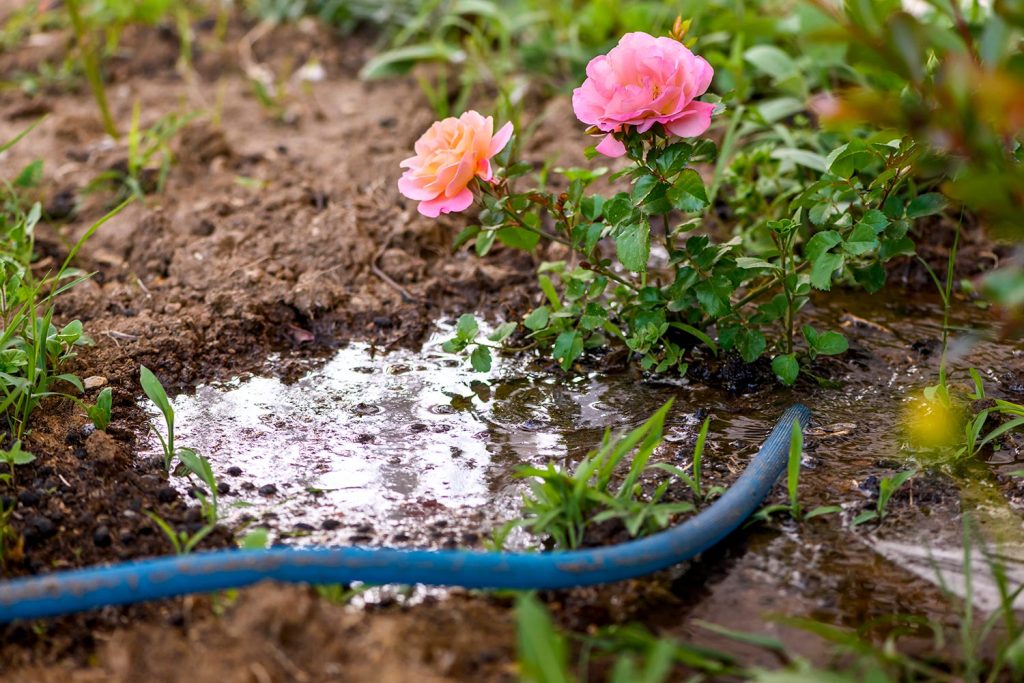
Be sure to follow the advice above for improving your soil conditions. Another option is to build a raised bed. This is an easier way to create your ideal soil conditions.
Plus, you can shape the mound to promote water runoff. If you encourage the water to flow away from the plant, what's left can move more efficiently.
What Grows Well In Clay Soil?
Some roses are better suited for less-than-ideal soil than others. If your conditions aren't perfect, try one of these less finicky types.
Rosa Gallica
Rosa Gallica is easy to grow and very hardy. It can survive temperatures as low as -25 degrees!
Some notable cultivars are Versicolor or Tuscany Superb.
It was one of the first rose species to be cultivated in central Europe and a parent to many modern-day cultivars.
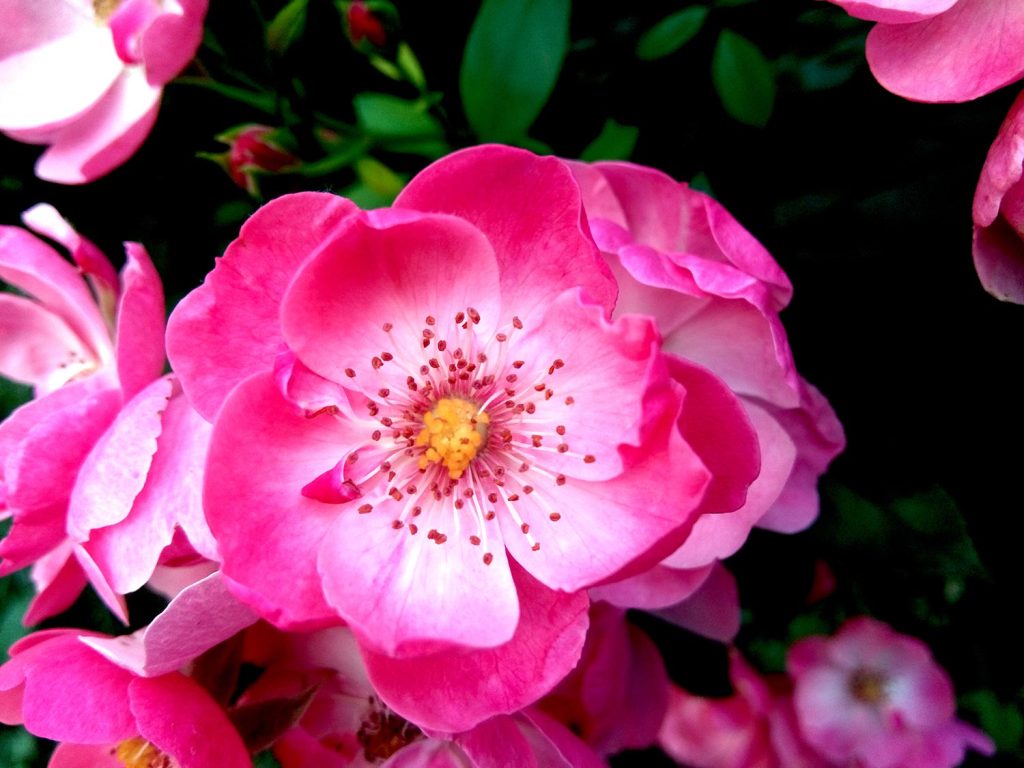
Floribunda Roses
Floribunda roses are a hardy plant that requires minimal upkeep and can offer plenty of blooms. They're a crossbred combination of shrub roses and tea roses and look a bit like both.
The flowers bloom abundantly, clustered like shrub roses. However, they have the shape and color variety of tea roses. They're a bit smaller than tea roses and are bushy but not quite as sprawling as the shrub roses are.
If you really want a colorful rose bush with loads of flowers, this is a great choice for areas with poor soil conditions.
Try 'Monkey Business' or 'Impatient' cultivars. Below is 'Pretty Lady,' another good choice that is very tolerant.
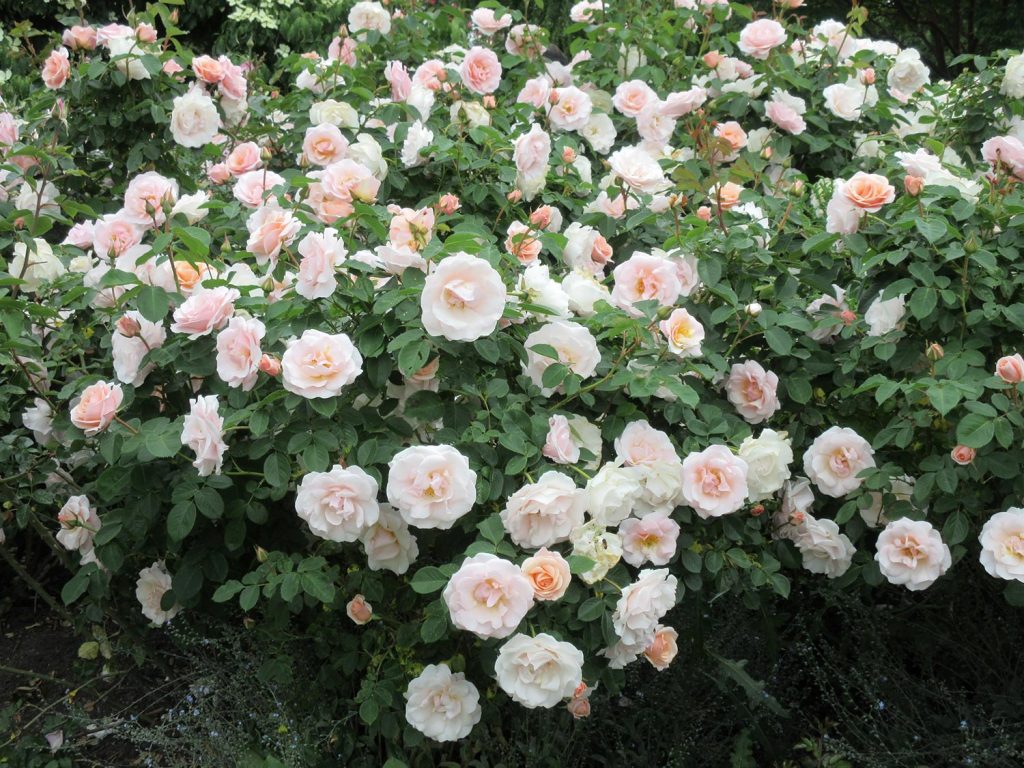
Rambling Rector
Rambling Rector is a rambling rose that can cover a wall or other structure. It has large clusters of small creamy-white flowers.
While it will do best in well-drained soil, it's pretty tolerant of even thick clay. It also handles shade better than most other rose types.
All in all, this is a strong, tough flower that can take most conditions. It just looks dainty and delicate.
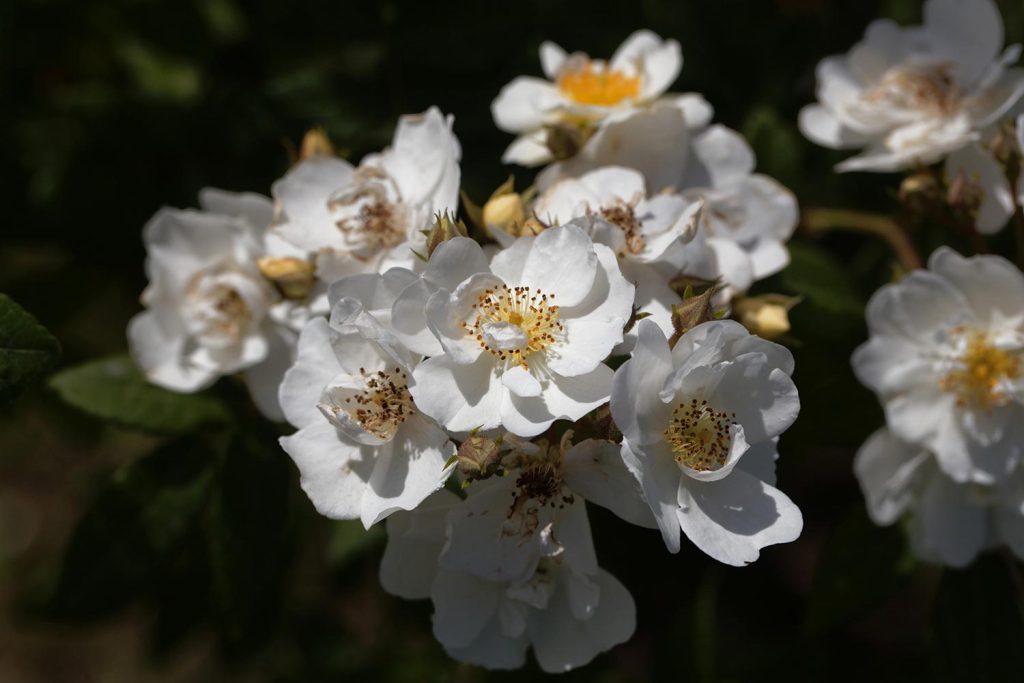
Swamp Rose/Rosa Palustris
It should be obvious that this flower can hold its own in wet soil. It's called a swamp rose, after all.
This is a hardy and naturally growing flower. It can be found in bogs and other wet areas. Sometimes, you may even find it in a ditch on the side of the road.
It's easy to grow, ideal for zones 4-9. While it likes wet conditions, it can thrive in soil with average moisture as well.
The flowers are pink and grow on full, bushy greenery that can be turned into a barrier hedge. It spreads through suckers and can quickly fill in a large area for landscaping if desired.

In Closing
Roses prefer loamy soil in ideal conditions, but they can also thrive in clay as long as there is proper drainage. Roses love the extra moisture that clay soils offer, but they hate wet roots. If the clay is too thick to permit proper water movement, roses will not do well.
In most clay soil, this problem can be fixed by improving the soil. Add mulch and organic matter to the clay, mixing it well. Test the soil to make sure it is draining well before planting. You can also test for nutrients and pH to make sure your roses get the best conditions to grow.
If you enjoyed this article, take a look at the following:



More of a question than comment- here goes. I’ve planted drift roses in very poor clay soil and they are not doing well. How do I add compost 6-8 inches deep around root zone? Plants are not going to survive in current conditions so willing to be as aggressive as possible to amend the soil.
Thanks!